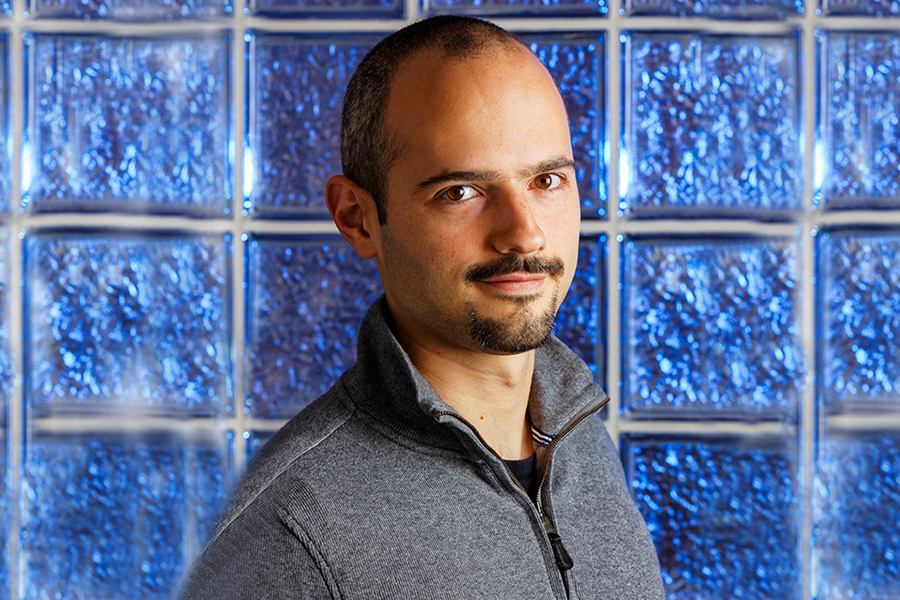
Q&A: Alumnus Takes His Ph.D. Training in Neural Computation to the NIH
By Stefanie Johndrow
Gustavo Sudre, a 2012 graduate of the Carnegie Mellon University’s Center for the Neural Basis of Cognition’s (CNBC) neural computation Ph.D. program, now spends his days in the National Human Genome Research Institute at the National Institutes of Health (NIH). With an overall goal to work at the intersection of genomic, neuroimaging and behavioral data in order to better understand complex, polygenic psychiatric disorders, such as attention deficit and hyperactivity disorder (ADHD) and Alzheimer’s disease, Sudre uses a combination of machine learning techniques, genomics and neuroimaging to study brain systems.
The CNBC is a joint center between the University of Pittsburgh and CMU that trains the next generation of neuroscientists through an interdisciplinary graduate and postdoctoral training program and fosters close collaborations between faculty.
What are you working on now? How did your work at Carnegie Mellon University influence your current research?
During my work at CMU, I applied neuroimaging in scientific and clinical settings. I investigated how the human brain represents knowledge by using a technique (magnetoencephalography, MEG) that measures how populations of neurons fire at the same time as the brain processes semantic information.
Before that, I worked in rehabilitation-focused labs to explore how MEG can be used to help individuals compensate for loss of motor function after a nervous system injury or limb loss. Now, I use similar technologies in mapping brain function in children with developmental disorders, such as ADHD.
My move to the NIH was prompted by a desire to integrate genomic data into this work, particularly in disorders that are known to be highly genetic. To this end, I now focus on integrating genomic and neuroimaging analysis when investigating complex behaviors.
What has surprised you during your research on brain connectivity and ADHD?
The biggest surprise was the challenge in proposing and publishing projects that appeal to the many areas involved in ADHD research. My work involves the fields of neuroimaging, genetics, machine learning and clinical applications, each of which pays attention to different details when it comes to evaluating research work. For example, one field might care more about large number of participants in the study, while the other cares about a simpler (more common or understandable) statistical method, while a third pays more attention to the underlying mechanisms of the disorder.
Catering to the different needs of the people who will read and use the research has been a big challenge, but an important one nevertheless, as such complex disorders span multiple domains and their many contributions should be taken into consideration.
Are there any CMU professors or mentors who helped you reach certain feats?
My advisor, Tom Mitchell, the E. Fredkin University Professor of Machine Learning, was an inspiration and career model for me from the start. His positive attitude towards every single issue made it not only easy to be his student, but it was also an example on how to respond to any challenges with which one is faced in life. His way to take new approaches to tackle old problems, and to extract meaning from any poor result that I had been struggling to come up with for weeks, are also lessons I will take with me for the rest of my career.
Dean Pomerleau, an adjunct professor in the Robotics Institute, is a creative force that has the power of shedding a special light into problems and making them look simpler than ever. He is a guy that has the skill of being successful at everything he tries, and a person with whom you can talk about a broad range of topics.
I'd also like to mention Rob Kass, the Maurice Falk Professor of Statistics and Computational Neuroscience and interim director of the CNBC, with whom I had a chance to collaborate in a few projects, and to (more formally) learn from in two different classes. His methodical approach to tackle different problems and his ease to explain the most complex techniques have been of great value in my career.
What did you appreciate most about the Neural Computation Ph.D. Program?
The flexibility of the program so that it can be tailored according to the student's goals was great. This applies to the classes we can take, as well as what professors and projects we can work with. The classes and research projects at CMU (and CNBC in general) are very vast, and it's great for the students to have so many options to choose from. In that sense, the flexibility offered by the Program of Neural Computation was crucial so that I could choose whatever matched my interests best.
Where do you see yourself and your research five years from now?
My future research will allow me to expand my previous background in neuroimaging, as well as to gain an expertise in sequencing and behavioral analysis, thus utilizing a multi-faceted approach when investigating complex disorders. I also plan on expanding these skills to study other disorders as well and incorporate other environmental variables into my research, such as nutrition, sleep, and exercise.
Learn more about the CNBC’s Ph.D. program in neural computation.